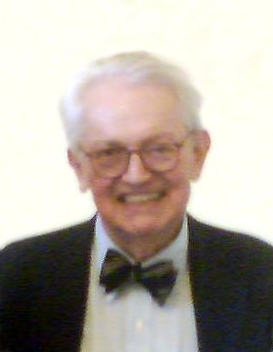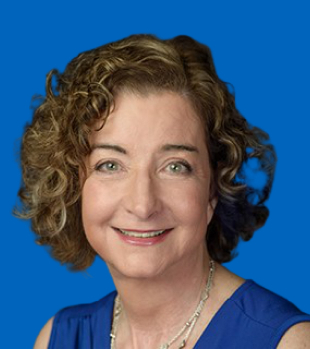Related Research Articles

Spectroscopy is the field of study that measures and interprets electromagnetic spectra. In narrower contexts, spectroscopy is the precise study of color as generalized from visible light to all bands of the electromagnetic spectrum.
Paul Christian Lauterbur was an American chemist who shared the Nobel Prize in Physiology or Medicine in 2003 with Peter Mansfield for his work which made the development of magnetic resonance imaging (MRI) possible.

Polykarp Kusch was a German-born American physicist. In 1955, the Nobel Committee gave a divided Nobel Prize for Physics, with one half going to Kusch for his accurate determination that the magnetic moment of the electron was greater than its theoretical value, thus leading to reconsideration of—and innovations in—quantum electrodynamics.

Nuclear magnetic resonance spectroscopy, most commonly known as NMR spectroscopy or magnetic resonance spectroscopy (MRS), is a spectroscopic technique based on re-orientation of atomic nuclei with non-zero nuclear spins in an external magnetic field. This re-orientation occurs with absorption of electromagnetic radiation in the radio frequency region from roughly 4 to 900 MHz, which depends on the isotopic nature of the nucleus and increased proportionally to the strength of the external magnetic field. Notably, the resonance frequency of each NMR-active nucleus depends on its chemical environment. As a result, NMR spectra provide information about individual functional groups present in the sample, as well as about connections between nearby nuclei in the same molecule. As the NMR spectra are unique or highly characteristic to individual compounds and functional groups, NMR spectroscopy is one of the most important methods to identify molecular structures, particularly of organic compounds.

The National High Magnetic Field Laboratory (MagLab) is a facility at Florida State University, the University of Florida, and Los Alamos National Laboratory in New Mexico, that performs magnetic field research in physics, biology, bioengineering, chemistry, geochemistry, biochemistry. It is the only such facility in the US, and is among twelve high magnetic facilities worldwide. The lab is supported by the National Science Foundation and the state of Florida, and works in collaboration with private industry.

Mildred Cohn was an American biochemist who furthered understanding of biochemical processes through her study of chemical reactions within animal cells. She was a pioneer in the use of nuclear magnetic resonance for studying enzyme reactions, particularly reactions of adenosine triphosphate (ATP).
Harry George Drickamer, born Harold George Weidenthal, was a pioneer experimentalist in high-pressure studies of condensed matter. His work generally concerned understanding the electronic properties of matter.
Herbert Sander Gutowsky was an American chemist who was a professor of chemistry at the University of Illinois Urbana-Champaign. Gutowsky was the first to apply nuclear magnetic resonance (NMR) methods to the field of chemistry. He used nuclear magnetic resonance spectroscopy to determine the structure of molecules. His pioneering work developed experimental control of NMR as a scientific instrument, connected experimental observations with theoretical models, and made NMR one of the most effective analytical tools for analysis of molecular structure and dynamics in liquids, solids, and gases, used in chemical and medical research, His work was relevant to the solving of problems in chemistry, biochemistry, and materials science, and has influenced many of the subfields of more recent NMR spectroscopy.
Rafael Brüschweiler is a scientist who studies nuclear magnetic resonance (NMR). He is credited for the development of Covariance NMR, which shortens the NMR measurement time for multidimensional spectra of both solution and solid-state NMR. It also allows for easier analysis and interpretation. For this achievement he was awarded the Laukien Prize in NMR Spectroscopy at the 47th Experimental Nuclear Magnetic Resonance Conference (ENC). He is also a leading scientist in NMR-based metabolomics and protein NMR.

Charles Pence Slichter was an American physicist, best known for his work on nuclear magnetic resonance and superconductivity.

Instrumental analysis is a field of analytical chemistry that investigates analytes using scientific instruments.
William Dale Phillips was an American chemist, nuclear magnetic resonance spectroscopist, federal science policy advisor and member of the National Academy of Sciences. He was born October 10, 1925, in Kansas City, Missouri and died in St. Louis, Missouri, on December 15, 1993.

Martin Gruebele is a German-born American physical chemist and biophysicist who is currently James R. Eiszner Professor of Chemistry, Professor of Physics, Professor of Biophysics and Computational Biology at the University of Illinois Urbana-Champaign, where he is the principal investigator of the Gruebele Group.

Laura H. Greene is the Marie Krafft Professor of Physics at Florida State University and chief scientist at the National High Magnetic Field Laboratory. She was previously a professor of physics at the University of Illinois at Urbana-Champaign. In September 2021, she was appointed to the President's Council of Advisors on Science and Technology (PCAST).
Palliakaranai Thirumalai Narasimhan (1928–2013), popularly known as PTN or Jim, was an Indian theoretical chemist, one of the pioneers of computational chemistry in India and a professor at the Indian Institute of Technology, Kanpur. He was known for his studies on quantum-mechanical interpretation of magnetic resonance data and his contributions in developing IIT Kanpur into a Centre of Excellence in academic research in the basic sciences. He was an elected fellow of the Indian National Science Academy, Indian Academy of Sciences and the National Academy of Sciences, India. The Council of Scientific and Industrial Research, the apex agency of the Government of India for scientific research, awarded him the Shanti Swarup Bhatnagar Prize for Science and Technology, one of the highest Indian science awards, in 1970, for his contributions to chemical sciences.
Chunni Lal Khetrapal was an Indian chemical physicist and a vice chancellor of the Allahabad University. He was known for his studies in chemical physics, particularly in the field of Nuclear magnetic resonance spectroscopy. He was an elected fellow of the Indian National Science Academy and the National Academy of Sciences, India. The Council of Scientific and Industrial Research, the apex agency of the Government of India for scientific research, awarded him the Shanti Swarup Bhatnagar Prize for Science and Technology, one of the highest Indian science awards, in 1982, for his contributions to chemical sciences.
Cynthia J. Jameson is an Emeritus Professor of Chemistry at the University of Illinois. She works on nuclear magnetic resonance spectroscopy and quantum chemistry. Jameson dedicated her academic career to supporting women scientists. She is a Fellow of the American Association for the Advancement of Science.
Laura B. Eisenstein (1942–1985) was a professor in the physics department at the University of Illinois until her early death. Eisenstein was known for her contributions to the understanding of light-energy transduction mechanisms in biological molecules and their higher order assemblies. She was an experimentalist and spectroscopist who was particularly well known for her contributions applying the techniques of x-ray absorption spectroscopy and time-resolved resonance Raman spectroscopy to the study of biomolecules. These studies indicated that phenomena such as quantum-mechanical tunnelling can be successfully investigated even in soft-matter systems like proteins.
Jerson Lima Silva, usually known as Jerson Lima, is a Brazilian biophysicist. He is known for his pioneering research in the field of structural biology, publishing important studies on protein folding and the relationship between protein aggregates and diseases such as cancer, prion diseases and Parkinson's disease.

Alfred G. Redfield was an American physicist and biochemist. In 1955 he published the Redfield relaxation theory, effectively moving the practice of NMR or Nuclear magnetic resonance from the realm of classical physics to the realm of semiclassical physics. He continued to find novel magnetic resonance applications to solve real-world problems throughout his life.
References
- ↑ "Library of Congress Authority Record". Library of Congress. Archived from the original on January 25, 2017. Retrieved May 2, 2016.
- 1 2 Rechcigl, Miloslav Jr. (2013). Czech American timeline : chronology of milestones in the history of czechs in america. [S.l.]: Authorhouse. p. 379. ISBN 978-1491824849 . Retrieved May 2, 2016.
- 1 2 3 4 Unger, Jeff (May 30, 2003). "Jiri Jonas elected to American Philosophical Society". Illinois News Bureau. University of Illinois Urbana-Champaign. Retrieved May 2, 2016.
- ↑ "Emeritus Faculty Photo Directory". The Department of Chemistry at the University of Illinois at Urbana-Champaign. Retrieved May 2, 2016.
- ↑ Fleming, Graham R.; Wolynes, Peter G. (1990). "Chemical Dynamics in Solution" (PDF). Physics Today. 43 (5): 36. Bibcode:1990PhT....43e..36F. doi:10.1063/1.881234.
- ↑ Taniguchi, Yoshihiro; Stanley, Harry E.; Ludwig, Horst (2002). Biological Systems Under Extreme Conditions Structure and Function. Berlin, Heidelberg: Springer Berlin Heidelberg. pp. 75–100. ISBN 978-3-662-04802-3 . Retrieved May 3, 2016.
- ↑ "General de Napoleão". Pesquisa. 2009. Retrieved May 2, 2016.
- 1 2 Peng, X; Jonas, J; Silva, J L (March 1, 1993). "Molten-globule conformation of Arc repressor monomers determined by high-pressure 1H NMR spectroscopy". Proc Natl Acad Sci U S A. 90 (5): 1776–1780. Bibcode:1993PNAS...90.1776P. doi: 10.1073/pnas.90.5.1776 . PMC 45962 . PMID 8446590.
- ↑ "Josef Pliva". Chemistry Tree. Retrieved May 2, 2016.
- 1 2 3 4 5 "Jiri Jonas". The Department of Chemistry at the University of Illinois at Urbana-Champaign. Retrieved May 2, 2016.
- 1 2 3 "Evaluation of the Advanced Research and Advanced Technology Programs A Report to the Texas Higher Education Coordinating Board" (PDF). Texas Higher Education Coordinating Board. Retrieved May 2, 2016.
- ↑ Brown, Theodore L. (2009). Bridging divides : the origins of the Beckman Institute at Illinois. Urbana: University of Illinois. ISBN 978-0252034848 . Retrieved December 11, 2014.
- ↑ Academies, National Academy of Sciences, the National (2005). Biographical memoirs. Washington: National Academy of Sciences. p. 151. ISBN 978-0-309-545-38-9.
{{cite book}}: CS1 maint: multiple names: authors list (link) - 1 2 Eldik, R. van; Jonas, J., eds. (1987). High pressure chemistry and biochemistry. Dordrecht: D. Reidel Pub. Co. ISBN 978-9027724571.
- ↑ Jonas, Jiri (1999). "High-Pressure Raman Scattering Studies of Fluids". In Winter, Roland; Jonas, Jiri (eds.). High pressure molecular science. Dordrecht: Kluwer Academic Publishers. pp. 1–23. ISBN 978-0792358060.
- ↑ Hegemann, B.; Jonas, J. (November 1984). "Temperature study of Rayleigh and Raman line shapes in liquid carbonyl sulfide". The Journal of Physical Chemistry. 88 (24): 5851–5855. doi:10.1021/j150668a022.
- ↑ Jonas, Jiri (1987). "Nuclear Magnetic Resonance and Laser Scattering Techniques at High Pressure". In Eldik, R. van; Jonas, J. (eds.). High pressure chemistry and biochemistry. Dordrecht: D. Reidel Pub. Co. pp. 193–235. doi:10.1007/978-94-009-3827-4_8. ISBN 978-9027724571.
- ↑ Zhang, Jing; Peng, Xiangdong; Jonas, Ana; Jonas, Jiri (July 1995). "NMR Study of the Cold, Heat, and Pressure Unfolding of Ribonuclease A". Biochemistry. 34 (27): 8631–8641. doi:10.1021/bi00027a012. PMID 7612603.
- ↑ Winter, R.; Jonas, Jiri, eds. (1993). High pressure chemistry, biochemistry and materials science : [proceedings of the NATO Advanced Study Institute on High Pressure Chemistry, Biochemistry and Materials Science, Aquafredda di Maratea, Italy, September 20 – October 3, 1992]. Dordrecht: Kluwer. ISBN 978-0792322900.
- ↑ Winter, Roland; Jonas, Jiri, eds. (1999). High pressure molecular science. Dordrecht: Kluwer Academic Publishers. ISBN 978-0792358060.
- ↑ "APS Fellowship". APS Physics. Retrieved May 2, 2016.
- ↑ "Jiri Jonas". National Academy of Sciences. Retrieved May 2, 2016.
- ↑ "LIST OF ACTIVE MEMBERS BY CLASS" (PDF). American Academy of Arts & Sciences. October 29, 2015.
- ↑ "Past DCP Executive Committee Members". APS Physics. Retrieved May 2, 2016.
- ↑ "Jiri Jonas". John Simon Guggenheim Memorial Foundation. Retrieved May 2, 2016.
- ↑ "Joel Henry Hildebrand Award in the Theoretical and Experimental Chemistry of Liquids". American Chemical Society. Retrieved May 2, 2016.
- ↑ "National Center of Nuclear Magnetic Resonance Jiri Jonas". CNRMN. Retrieved May 2, 2016.
- ↑ Romero, Thiago (September 3, 2007). "O Centro Nacional de Ressonância Magnética Nuclear Jiri Jonas (CNRMN), localizado no campus da Universidade". Brazilian National STD and AIDS Programme. Archived from the original on May 14, 2016. Retrieved May 2, 2016.
- ↑ "URRICULUM VITAE : JERSON LIMA SILVA" (PDF). The World Academy of Sciences. Retrieved May 2, 2016.